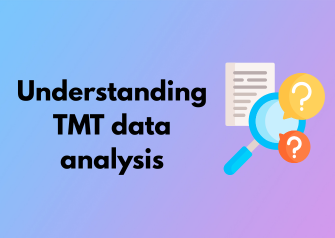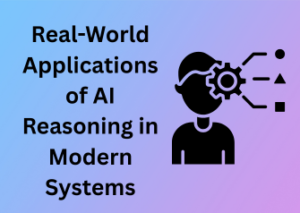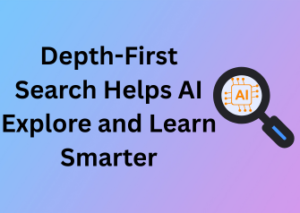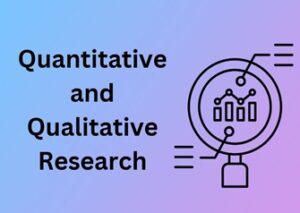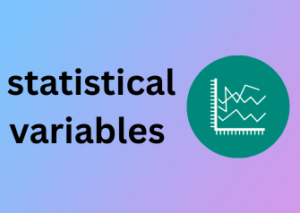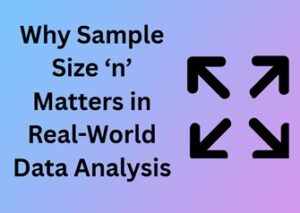Hello there! Let’s dive into an exciting topic that’s reshaping how modern businesses operate: TMT data. For newcomers, TMT stands for Technology, Media, and Telecommunications. These industries are at the core of the digital age, generating huge volumes of data every second. But what makes that data so valuable, and how does it impact businesses? Let’s break it down in a way that’s easy to grasp!
What is TMT Data?
TMT data refers to all the information produced within these sectors, from user behavior patterns on social media platforms to telecommunications usage stats or even data from streaming services. Essentially, it’s a goldmine of insights waiting to be turned into actionable strategies.
For example, when you watch your favorite sitcom on a streaming service, your viewing choices—how often you pause, skip episodes, or binge—are invaluable data points for the company. This understanding helps them tailor recommendations, design better content, and, ultimately, keep you coming back for more!
Key Elements of TMT Data
Let’s break it into some digestible chunks. Here are the fundamental elements of TMT data and why they matter:
- User Behavior Data: Tracks how customers interact with services, revealing preferences, trends, and habits.
- Content Data: The actual digital assets being consumed, such as videos, articles, or posts. Understanding this helps businesses optimize offerings.
- Network Data: Telecommunications data focusing on bandwidth usage, coverage, and system efficiency, all critical for infrastructure decisions.
- Transactional Data: Covers purchases, subscriptions, and general customer spending patterns.
Each of these elements works like a puzzle piece, forming a larger, clearer picture of the market and consumer expectations.
Why TMT Data is a Game-Changer for Businesses
Still wondering why all this matters? Well, let me tell you—leveraging TMT data smartly can lead to transformative outcomes for businesses. Here’s why:
- Better Decision-Making: TMT data gives businesses the confidence to make data-driven decisions, leaving room for fewer mistakes.
- Enhanced Customer Experiences: Imagine a world where businesses know exactly what you want before you ask. TMT data makes this possible through predictive insight.
- Optimized Operations: By analyzing how resources are used—whether bandwidth on a telecom network or peak viewership times on a media platform—companies can find ways to streamline operations.
- Increased Revenue: More targeted advertising, tailored offerings, and optimized pricing models naturally lead to higher earnings.
Take a tech company launching a new smartphone. By analyzing TMT data, they could identify the most desirable features, set the perfect launch price, and target the right customers through strategic media campaigns. That’s the power of understanding TMT data—it drives success from multiple angles.
How Can Businesses Get Started?
Here’s the great news: it’s never too late to embrace TMT data. If you’re just getting started, keep these tips in mind:
- Start Small: You don’t need massive datasets to make progress. Begin with a manageable scope, like analyzing user engagement trends on your website.
- Invest in Training: Equip your team with the technical know-how to interpret and utilize this data effectively.
- Leverage the Cloud: Storing and analyzing TMT data on the cloud can save costs and make it accessible from anywhere.
The Evolution of TMT Data Analysis: From Spreadsheets to AI Integration
Data analysis in the Technology, Media, and Telecommunications (TMT) sector has come a long way. It’s truly fascinating to see how TMT organizations have evolved from relying on basic spreadsheets to harnessing the power of artificial intelligence (AI). Today, more than ever, businesses are uncovering deeper insights, solving complex problems, and driving innovation—all because of the way data analysis in this sector has matured. Let’s take a journey through this evolution and understand why it matters.

The Humble Beginnings: Spreadsheets as Cornerstones
Once upon a time (not long ago), businesses relied heavily on spreadsheets for everything related to data collection, organization, and analysis. Why? Because spreadsheets were simple, familiar, and functional. In the early days, companies in the TMT sector primarily used these tools for organizing numbers, plotting charts, and making sense of basic data trends.
While effective for small-scale analysis, spreadsheets had limitations. They were static, prone to errors, and demanded extensive manual input. As TMT industries began producing larger and more complex datasets, spreadsheets simply couldn’t keep up. This signaled the need for more scalable and automated solutions.
The Middle Ground: The Rise of Business Intelligence Tools
As technology advanced, the demand for better analytics tools in the TMT world intensified. This gave rise to business intelligence (BI) platforms. Tools like Tableau, Power BI, and QlikView became game-changers. They allowed companies to:
- Visualize data in interactive dashboards.
- Streamline processes by automating repetitive tasks.
- Integrate data from multiple sources in real time.
Suddenly, teams could process massive amounts of information faster and more accurately than ever before. With these tools, decision-makers in the TMT sector could detect patterns, predict trends, and identify key performance indicators (KPIs) with greater precision.
The Present-Day Leap: Enter Artificial Intelligence
If business intelligence tools represented a step forward, AI integration is a quantum leap. The introduction of AI-driven analytics in TMT data has completely redefined what’s possible. AI systems don’t just analyze data—they learn from it over time. They can detect anomalies, make recommendations, and even predict future shifts with astonishing accuracy.
Here’s why AI is a game-changer:
- Automation: No longer do analysts need to sift through endless datasets manually. AI automates repetitive processes, saving time and resources.
- Scalability: TMT companies now deal with gargantuan datasets. AI tools, like machine learning algorithms, are built to handle this scale effortlessly.
- Deep Insights: AI doesn’t just identify trends; it uncovers valuable insights that might not be immediately obvious to human analysts.
For example, a media company using AI for viewer analysis can recommend personalized content to its audience with near-perfect accuracy. Similarly, telecom companies can predict network outages before they occur, enhancing the customer experience.
Common Challenges Faced in TMT Data Interpretation and Their Solutions
When working with TMT (Technology, Media, and Telecommunications) data, interpreting it isn’t always as straightforward as it might seem. While the potential of extracting actionable insights from TMT data is immense, the journey from raw data to meaningful analysis is often riddled with obstacles. Let’s explore some of the most common challenges businesses face in working with TMT data and how to overcome them effectively.
1. The Overwhelming Volume of Data
In today’s digital age, the sheer volume of TMT data can be daunting. Businesses are inundated with massive streams of information—from device usage statistics and media consumption patterns to telecommunications network data. Filtering through this flood of raw data to extract the meaningful pieces can feel like hunting for a needle in a haystack.
Solution: Focus on data prioritization. Leveraging data management tools like BigQuery or Snowflake can help filter and organize massive datasets. Additionally, set clear objectives at the outset to pinpoint exactly which data is relevant to your goals, reducing noise and distractions.
2. Poor Data Quality
Let’s face it—data is only as good as its accuracy and reliability. TMT data often comes riddled with gaps, duplications, or inconsistencies, which can derail analytical efforts and impact decision-making. Faulty interpretations based on inaccurate data? That’s a costly mistake businesses cannot afford.
Solution: Invest in robust data cleansing and validation tools. Use technology such as Talend Data Preparation or Informatica to scrub, standardize, and ensure the accuracy of your datasets. Another important step? Foster an organizational culture around maintaining data hygiene to minimize errors at the point of data entry.
3. Lack of Context
Data doesn’t exist in isolation—it’s part of a broader context that gives it meaning. Without proper context, even the most detailed TMT data points can lead to misinterpretation. For example, a spike in media app engagement might look great on paper but could mean little if you’re unaware that it coincides with an external factor, such as a major live event.
Solution: Pair your TMT data with external reference points. This could include market trends, competitor performance, or social factors. Contextual intelligence tools such as ThoughtSpot can enrich your analysis by marrying internal data with external insights.
4. Data Silos
In many organizations, data exists in silos—different departments hold onto their own datasets, which are often disconnected and unintegrated. For example, tech teams may handle infrastructure data, while marketing teams track customer engagement. This disjointed approach hinders comprehensive analysis.
Solution: Adopt a unified data integration strategy. Tools like Tableau or Microsoft Power BI can facilitate cross-departmental data sharing and visualization. Building a company-wide data pipeline also ensures that insights from various departments feed into a consolidated framework.
5. Analytical Skills Gap
Even the best data tools can be underutilized if your team doesn’t have the skills to interpret the information effectively. Many organizations lack employees who are proficient in advanced data analysis techniques, especially as datasets grow increasingly complex.
Solution: Upskill your team. Invest in training programs focused on analytics platforms, visualization techniques, and even basic statistical methods. Platforms like Coursera and Udacity are great places to start. Alternatively, consider collaborating with external analytics experts or hiring data scientists for specialized roles.
6. Overdependence on Technology
While technology solutions are essential in today’s TMT data landscape, it’s easy to fall into the trap of over-relying on them. Automated systems might overlook nuances, and blind trust in algorithms can sometimes lead to misguided decisions.
Solution: Complement technology with human oversight. Ensure every analysis includes critical thinking and validation from domain experts who can spot trends, outliers, or patterns that automation might miss.
Industry-Specific Insights Derived from TMT Data Analysis
When we talk about TMT (Technology, Media, and Telecommunications) data, it’s hard not to marvel at how powerful it can be for shaping industries. Whether it’s identifying trends, predicting customer behavior, or optimizing strategies, TMT data has become a treasure trove of insights that businesses across sectors can tap into. But here’s the beauty of it—every industry extracts unique, actionable insights from TMT data that directly align with their goals. Let’s dive into these sector-specific insights and understand why they matter so much!
1. Technology: Driving Product Innovation
In the technology sector, TMT data is like a compass, guiding innovation and product development. Companies rely heavily on data analytics to assess user behavior, adoption trends, and performance metrics of their products. For example, by analyzing app usage patterns, tech firms can determine which features are well-loved and which ones are falling flat.
2. Media: Predicting Content Trends
The media industry thrives on capturing audience attention, and TMT data is its secret weapon. By analyzing viewership patterns, social media engagement, and subscription behaviors, media companies create content that resonates with their audiences. Ever notice how streaming platforms seem to know exactly what you’d love to binge next? That’s the magic of TMT data in action.
Highlight: Media companies must focus on real-time analytics. Trends shift at lightning speed, and businesses that adapt quickly gain significant competitive advantages.
3. Telecommunications: Enhancing Customer Experience
For telecom players, customer satisfaction is everything. TMT data is used to detect network bottlenecks, predict service disruptions, and optimize pricing models. Companies can also use this data to identify underserved areas, enabling them to expand coverage where it’s most needed.
Did You Know? Churn prediction—a method to identify customers at risk of switching providers—is one of the most popular ways telecom companies use data insights to retain their customer base!
4. Retail: Boosting Omni-Channel Strategies
The retail world has fully embraced TMT data, especially when it comes to digitization. Many brands use this data to enhance their omni-channel strategies, ensuring consistency between in-store and online customer experiences. TMT data also reveals shopper preferences and seasonal trends, letting retailers personalize offerings like never before.
Example: Retailers who use TMT data to predict demand can minimize stock-outs and overstock situations, striking the perfect balance between supply and demand.
5. Finance: Shaping FinTech Innovations
While not traditionally part of the TMT trifecta, the finance industry reaps significant benefits from data analysis. From fraud detection to investment trend forecasting, financial institutions depend on data to remain agile and secure. The rise of FinTech is largely credited to advanced data capabilities, including AI and predictive analytics stemming from TMT developments.
Tools and Technologies Shaping the Future of TMT Data Analytics
Hey there! Let’s dive into something exciting: the groundbreaking tools and technologies that are shaping the future of TMT (Technology, Media, and Telecommunications) data analytics. TMT data is transforming industries at lightning speed, and the tools we use are riding the wave of innovation. Whether you’re a data enthusiast, a business leader, or simply someone curious about the power of numbers, this is for you!
Why Tools and Technology Matter in TMT Data
Handling TMT data isn’t as basic as crunching numbers in a spreadsheet anymore—no offense to Excel, of course! The landscape has evolved massively. Modern tools aren’t just about processing data faster; they’re about providing deep insights, predictive capabilities, and even suggesting actions. These technologies are at the core of how businesses make smarter decisions, from targeting the right audience to predicting market trends.
The Top Tools Leading the Charge
So, what are the game-changers in the world of TMT data? Let’s take a look:
- AI-Powered Analytics Platforms: Artificial intelligence is the crown jewel of TMT analytics. Tools like Google Cloud AI, SAS Analytics, and Ribbon Communications process colossal volumes of data, uncovering trends and predicting customer behavior. AI doesn’t just analyze data; it learns from it!
- Data Visualization Software: Have you ever tried interpreting charts and graphs that seem more like abstract art than meaningful insights? Tools like Tableau, Power BI, and Looker transform raw data into easy-to-understand visuals, letting you absorb insights at a glance.
- Cloud Storage and Big Data Solutions: If your business generates terabytes of data (hello, media streaming companies!), platforms like Amazon Web Services (AWS), Google BigQuery, and Snowflake keep your data organized, secure, and scalable.
- Real-Time Analytics Frameworks: In fast-paced industries like telecommunications, real-time analytics tools such as Apache Kafka or Google Dataflow make instant data processing possible. This means decisions can be made in minutes, not days.
- No-Code/Low-Code Platforms: These are a blessing for non-tech-savvy users! Platforms like Alteryx and Databricks let anyone dig into data without needing a PhD in computer science. Think fewer headaches, more results!
Emerging Technologies: What’s Next?
As we look to the future, “cutting edge” is about to get even sharper. Here’s what’s on the horizon:
- Quantum Computing: This tech is still in its infancy, but it will revolutionize analytics by solving problems in seconds that would take today’s systems years to handle.
- Edge Computing: Particularly useful in telecommunications, it processes data closer to its origin (like on a device) rather than sending everything to the cloud.
- Natural Language Processing (NLP): Imagine typing questions into your analytics tool like, “Why are Q3 sales lagging in Region A?” and having the answer provided in plain English. Gets us closer to Star Trek-level interactions, doesn’t it?
Real-World Examples of Transformative Decisions Enabled by TMT Data
Have you ever wondered how businesses leverage data to make game-changing decisions? In the Technology, Media, and Telecommunications (TMT) sector, data isn’t just numbers on a spreadsheet—it’s a powerful lens that helps companies adapt, innovate, and thrive. Let’s explore some real-life examples where TMT data has played the hero, enabling transformative decisions that drove success and growth.
1. Netflix: Revolutionizing Entertainment with Data
When people talk about data transformation in media, Netflix is often the first name that comes to mind—and with good reason! Netflix uses its wealth of TMT data to predict viewing patterns, guide content creation, and even shape personalized user experiences. Ever notice how the suggested shows or movies feel like they’re made just for you? That’s no accident.
For example, in 2013, Netflix made the bold decision to produce House of Cards, based on insights derived from their data. They analyzed subscriber viewing habits and found a high level of engagement with political dramas and films starring Kevin Spacey. Armed with this knowledge, Netflix greenlit the project, which became one of its first big streaming hits and helped redefine the streaming industry.
2. AT&T: Enhancing Network Optimization
The telecommunications giant AT&T is another excellent example of how TMT data can unlock solutions to critical business issues. AT&T uses advanced data analytics to monitor their network performance in real time. Machine learning tools process terabytes of data to identify potential bottlenecks and problems before customers even notice an issue.
This predictive approach doesn’t just reduce downtime—it also drives better customer satisfaction. In competitive markets, staying proactive rather than reactive has become a crucial advantage for companies like AT&T.
3. Spotify: Perfecting Playlists with AI-Powered Insights
Music streaming platforms face the challenge of tailoring their services to millions of users with unique tastes. Spotify rises to the occasion using TMT data coupled with artificial intelligence. Their famous “Discover Weekly” feature creates personalized playlists by analyzing listening habits alongside similar user profiles.
Here’s the kicker: Spotify’s algorithms don’t just serve you songs you’ve already heard—they introduce you to new artists and genres, constantly keeping the experience fresh. This endless cycle of discovery hooks users and pushes Spotify ahead of the curve in the highly competitive music industry.
4. Disney: Elevating Theme Park Experiences Through Data
Even larger-than-life experiences, like those at Disney theme parks, gain from TMT data. With the introduction of the MagicBand wearable, Disney made a splash in personalized visitor experiences. These bands, embedded with RFID chips, capture data on visitor behavior, such as ride preferences, dining choices, and park navigation patterns.
This data allowed Disney to optimize its operations like never before. For instance, they’ve improved queue management, boosted customer engagement with tailored offers, and even delivered lightning-fast ride recommendations—all designed to keep the magic alive for visitors.
5. Tesla: Redefining the Automotive Landscape
And then there’s Tesla. The electric car company uses TMT data extensively, from improving vehicle software to defining how cars self-drive. Every Tesla owner contributes to a vast pool of data collected from their connected cars. This data is fed back into Tesla’s machine learning algorithms, leading to continual improvements in their autonomous driving systems.
What’s remarkable is how this feedback loop ends up benefitting all users, making every Tesla safer and smarter over time. It’s a live demonstration of TMT data driving innovation in the auto industry.
Ethical Considerations and Best Practices in Handling TMT Data
Let’s face it, when working with TMT (Technology, Media, and Telecommunications) data, there’s a lot of responsibility on your shoulders. After all, this data isn’t just numbers on a screen; it’s an essential resource for businesses and has real-world implications for people’s privacy, security, and trust. So, how can we handle TMT data ethically, respecting everyone involved while still making impactful business decisions? Let’s break it down in an approachable and helpful way!

Why Do Ethical Considerations Matter?
Imagine using all that powerful TMT data without thinking about the consequences—it’s a recipe for disaster. Companies that misuse this data could face legal penalties, loss of consumer trust, or even harm their reputation irreparably. But beyond the consequences, there’s a deeper issue here: doing the right thing. When handled ethically, TMT data can lead to better business practices and even benefit society, but carelessness can erode public trust in technology and media entirely.
The Foundations of Ethical TMT Data Handling
Think of ethics as your North Star—it guides you in making decisions that go beyond just profit. Here are some of the fundamental principles for handling TMT data ethically:
- Transparency: Be upfront with stakeholders, including customers, about what data is being collected, why it’s being collected, and how it will be used. Nobody likes feeling tricked!
- Consent: Always ensure that data collection is consensual. Respect privacy rights with simple, clear opt-in mechanisms instead of hidden or confusing agreements.
- Data Minimization: Collect only the data you truly need. Less is more here – and less risky too.
- Accountability: Assign clear responsibility for data management within your organization. Someone’s got to own it, and that someone needs to take ethics seriously.
These principles may sound straightforward, but in the fast-paced TMT world where data flies at you from all directions, implementing them consistently can be a challenge. That’s why best practices exist.
Best Practices for Ethical TMT Data Management
If you’re not sure where to begin, consider these actionable steps to guide your team in handling data responsibly:
- Invest in Robust Security Measures: Data breaches aren’t just tech nightmares; they’re trust destroyers. Use encryption, regular audits, and secure storage solutions to protect sensitive data.
- Train Your Team: Everyone involved in data handling should understand the importance of ethics and know how to recognize potential risks or violations.
- Regularly Review Policies: The digital world evolves quickly, and what’s ethical today might not be tomorrow. Stay proactive by revisiting your policies frequently.
- Avoid Bias in Data Use: When analyzing or applying TMT data, ensure algorithms and decisions don’t unintentionally reinforce stereotypes or inequalities. Fairness is key.
- Allow for Opt-Out: Give customers an easy, straightforward way to opt out of data collection or sharing—no sneaky practices, please!
Striking the Balance Between Innovation and Responsibility
Here’s the thing: businesses want to stay competitive, and data is often described as “the new oil” for good reason. But the most successful companies understand that innovation doesn’t have to come at the expense of ethics. Handling TMT data ethically not only reduces risks but can also increase customer loyalty and brand respect over time.

